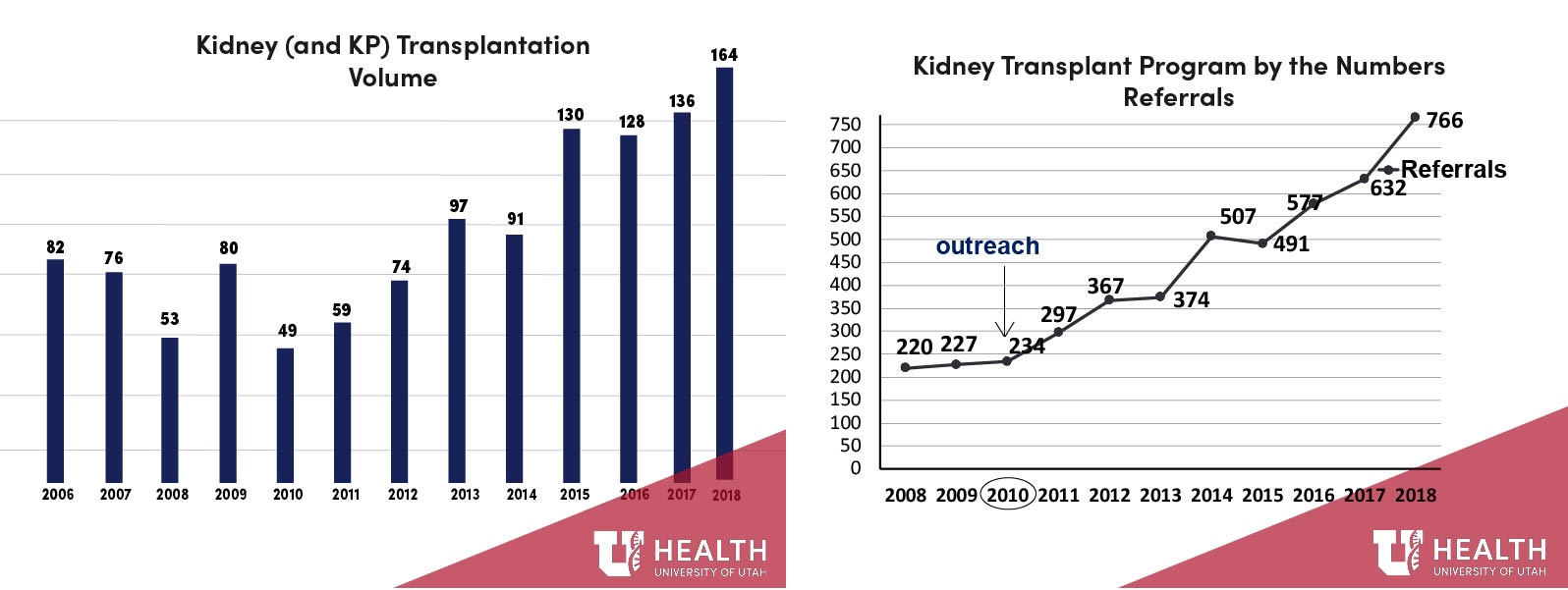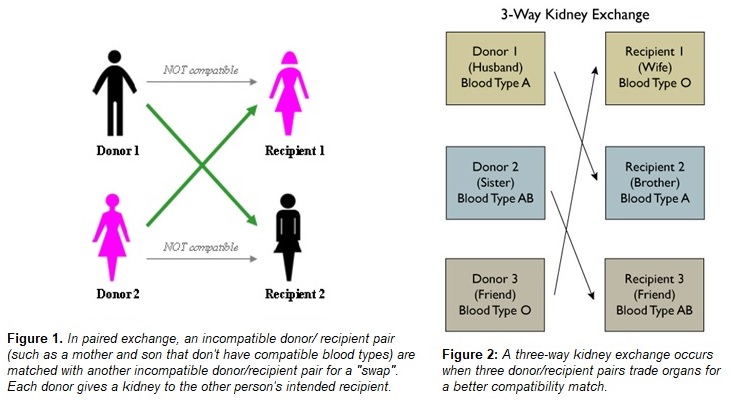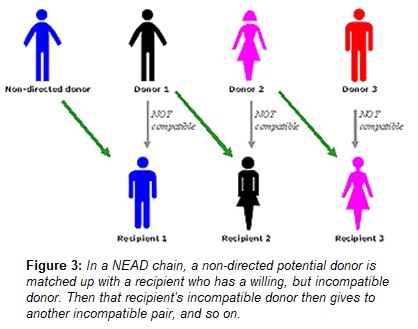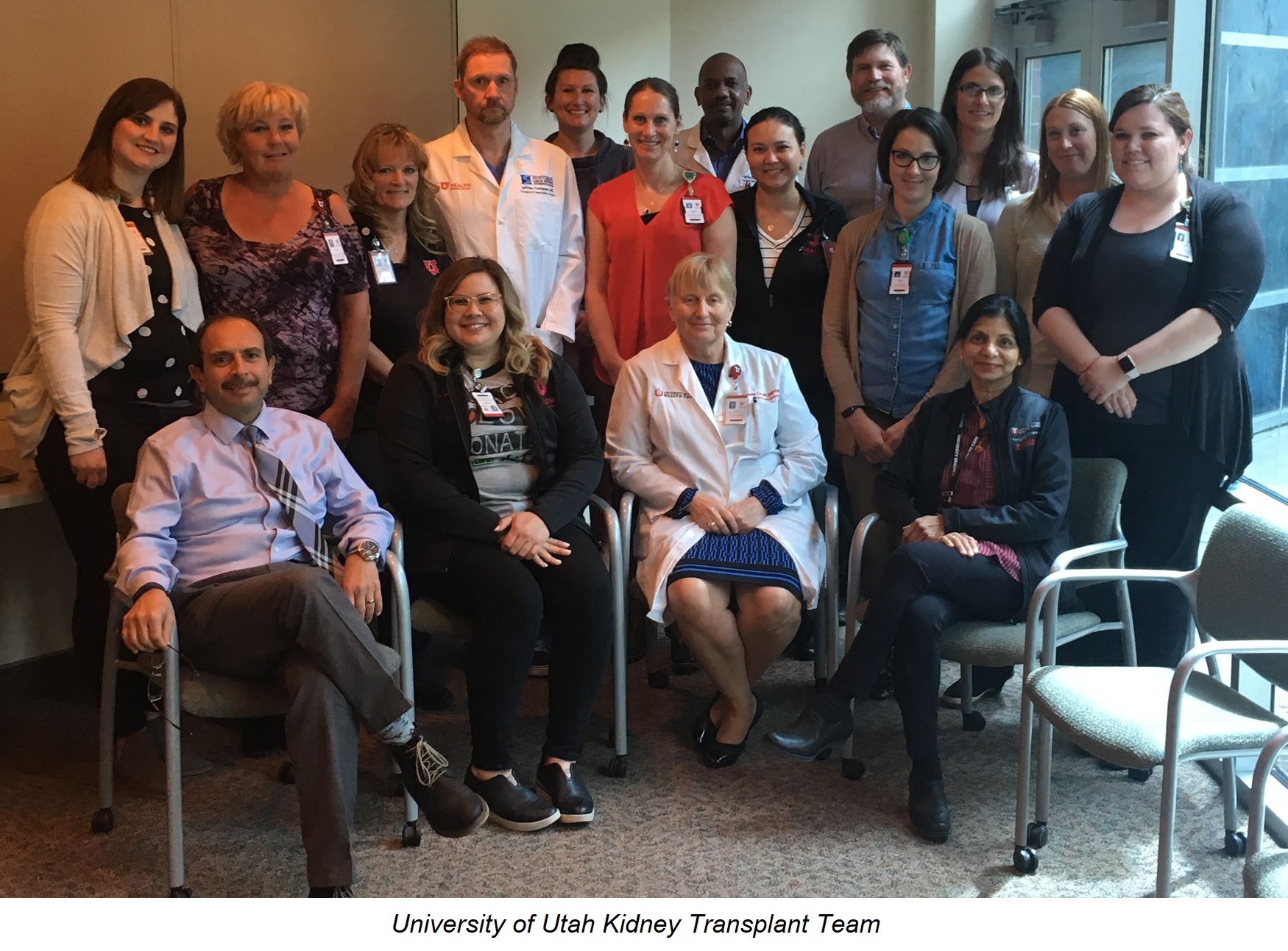Live Donor Kidney-Paired Donation at the University of Utah
Since its inception in 1965, the kidney transplant program at the University of Utah has performed over 3,000 kidney transplants and is one of the premier kidney transplant programs in the nation. The kidney transplant program has experienced a tremendous growth over the past 10 years with a total of 164 kidney, kidney-pancreas, kidney-liver and kidney-heart transplants having been performed in 2018 alone. The success of the program is credited to a multi-disciplinary team, innovative approaches, and a robust outreach program that covers the state of Utah, Idaho, Wyoming and Montana. In 2018, the program received more than 700 referrals and is projected to grow every year.

With the number of deceased donors being limited and more patients waiting for a kidney transplant, the program has focused on innovative approaches to increase living kidney donation with the aim to benefit patients who are difficult to transplant and would have waited many years for a kidney to become available. Some of those approaches include the use of paired living-donation and creating altruistic donor chains.
A paired kidney exchange, also known as a “kidney swap” occurs when a living kidney donor is incompatible with the recipient, and so exchanges kidneys with another donor/recipient pair. If the recipient from one pair is compatible with the donor from the other pair, and vice versa– the transplant center may arrange for a "swap"–for two simultaneous transplants to take place. See Figure 1.


Participating in the paired kidney exchange program allows for a recipient to receive a better matched kidney, and helps other individuals who would otherwise continue to wait for a matched donor. Approximately 45% of donor/recipient pairs could find a perfectly matched donor by entering the national paired kidney exchange program.
If the surgery is a simple exchange between two donor/recipient pairs, the program will typically remove the kidneys from the donors in the morning and transplant to the recipients in the afternoon. There may be times, however, when one transplant surgery may be scheduled a few weeks after the other. If multiple donor/recipient pairs are involved, the process may take several weeks. Most hospitals will accept a donor’s kidney that has been shipped. Research has shown the living donor kidneys can be stored in preservation fluid for up to eight hours and still work effectively.
Donor/recipient pairs do not meet until after the exchange has taken place and only if each person agrees.
If you know someone who is interested in being a paired or non-directed donor, please contact our living donor coordinator at 801-585-3202 regarding the paired donation program.
